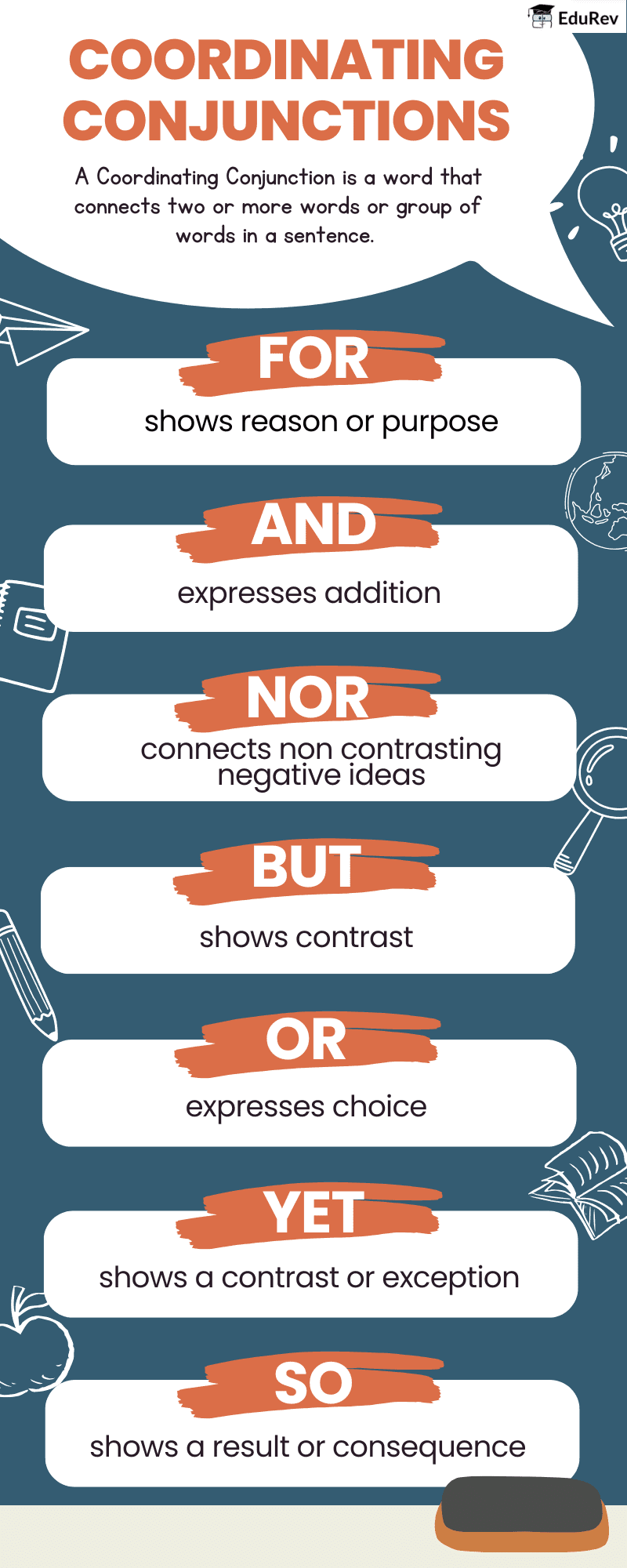Class 3 Exam > Class 3 Notes > English Grammar Class 3 > Infographics: Coordinatioing Conjunctions
Infographics: Coordinatioing Conjunctions | English Grammar Class 3 PDF Download

The document Infographics: Coordinatioing Conjunctions | English Grammar Class 3 is a part of the Class 3 Course English Grammar Class 3.
All you need of Class 3 at this link: Class 3
|
28 videos|165 docs|27 tests
|
FAQs on Infographics: Coordinatioing Conjunctions - English Grammar Class 3
| 1. What are coordinating conjunctions and how are they used in sentences? |  |
Ans. Coordinating conjunctions are words that connect words, phrases, or clauses that are similar or equal in structure. The most common coordinating conjunctions are "and," "but," "or," "nor," "for," "so," and "yet." They are used to join two independent clauses, as in "I wanted to go for a walk, but it started to rain."
| 2. Can you provide examples of coordinating conjunctions in sentences? |  |
Ans. Certainly! Here are a few examples:
- "I wanted pizza for dinner, and my sister wanted sushi."
- "She can either stay at home, or she can join us at the party."
- "He was tired, yet he decided to finish his homework."
| 3. How do you remember the coordinating conjunctions easily? |  |
Ans. A common mnemonic to remember the coordinating conjunctions is the acronym FANBOYS, which stands for For, And, Nor, But, Or, Yet, So. This can help you recall all the coordinating conjunctions used in English.
| 4. Are there rules for using coordinating conjunctions in complex sentences? |  |
Ans. Yes, when using coordinating conjunctions in complex sentences, ensure that both parts you are connecting are independent clauses. Place a comma before the conjunction when connecting these clauses. For example, "I was hungry, so I made a sandwich."
| 5. What is the difference between coordinating conjunctions and subordinating conjunctions? |  |
Ans. Coordinating conjunctions connect elements that are equal, whereas subordinating conjunctions introduce dependent clauses that cannot stand alone. For example, in the sentence "Although it was raining, we went for a hike," "although" is a subordinating conjunction.
Related Searches
















